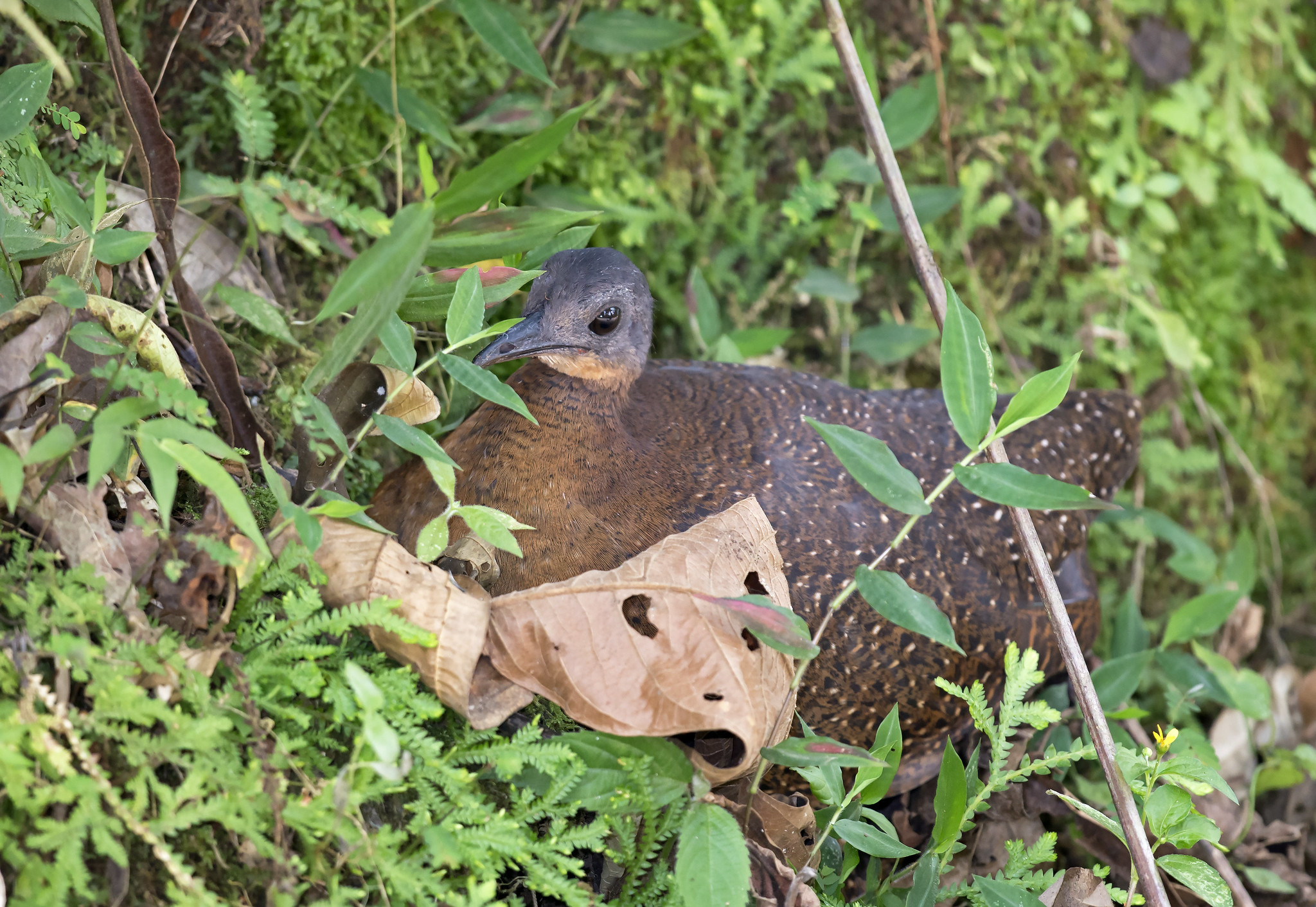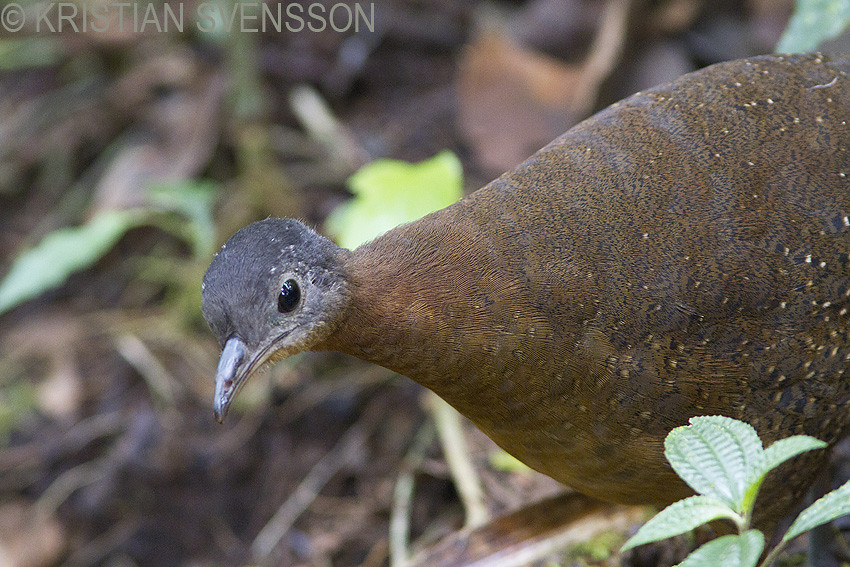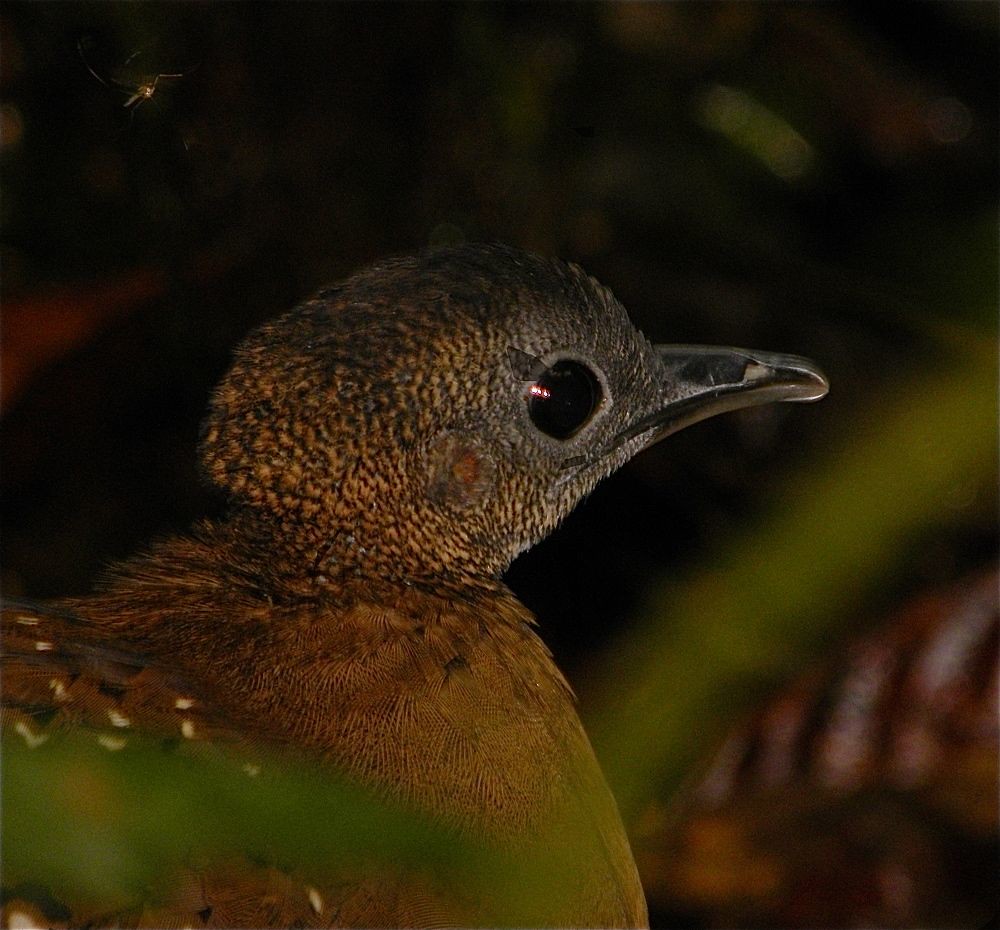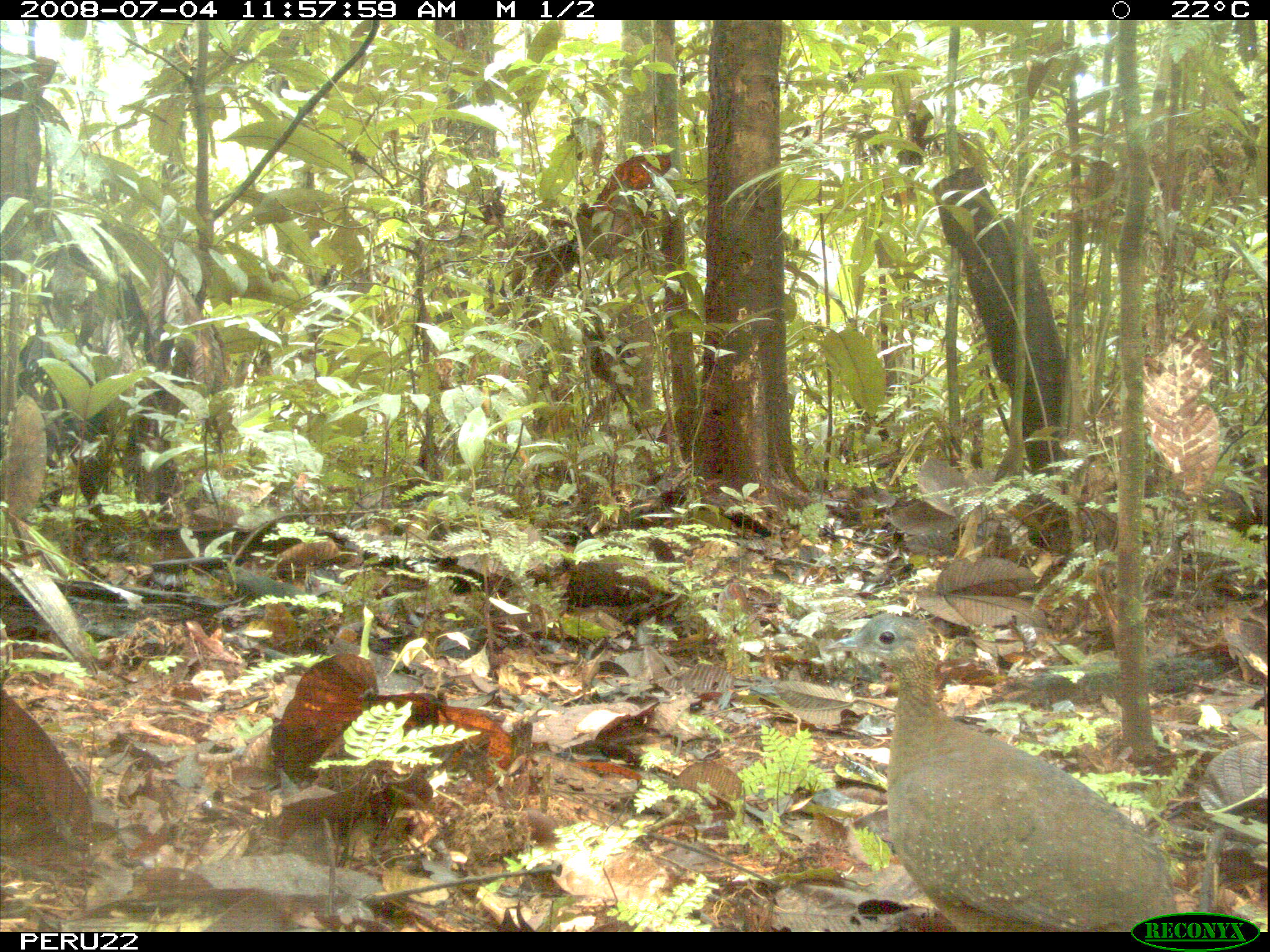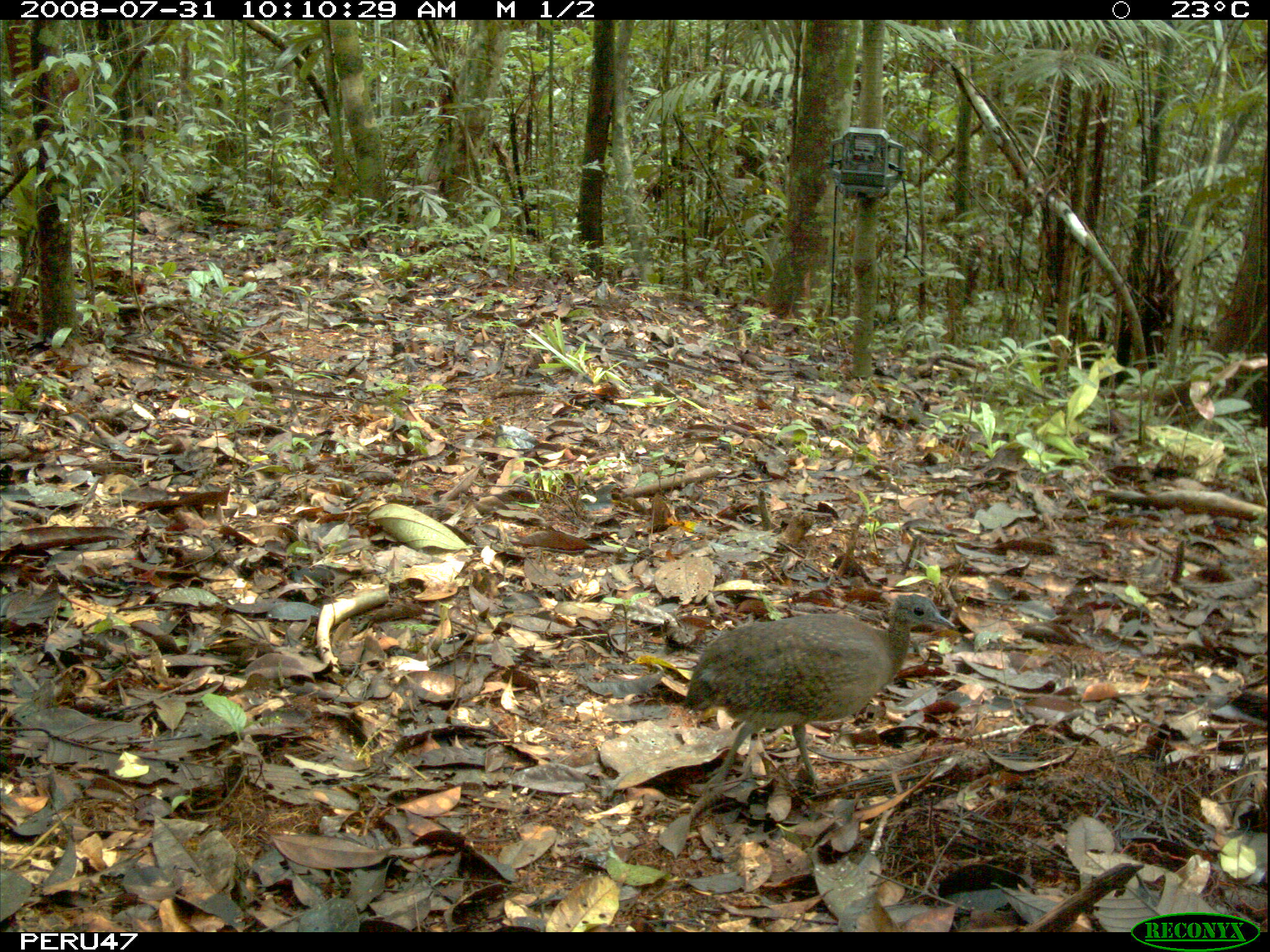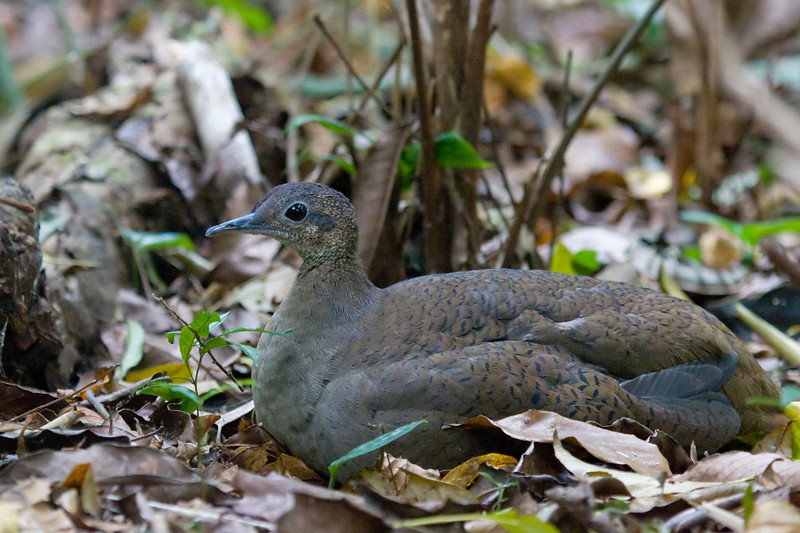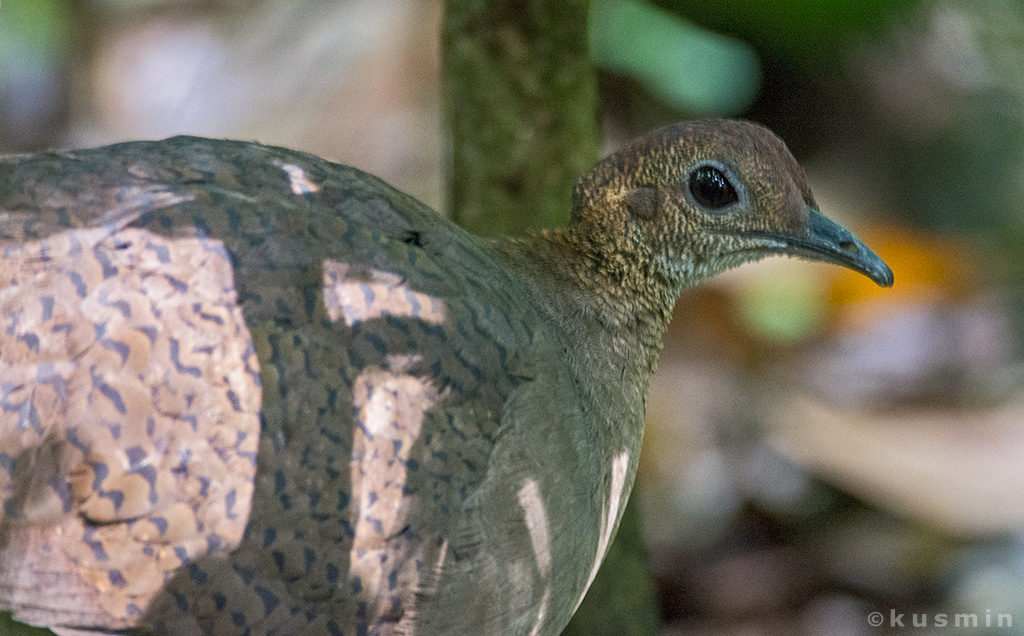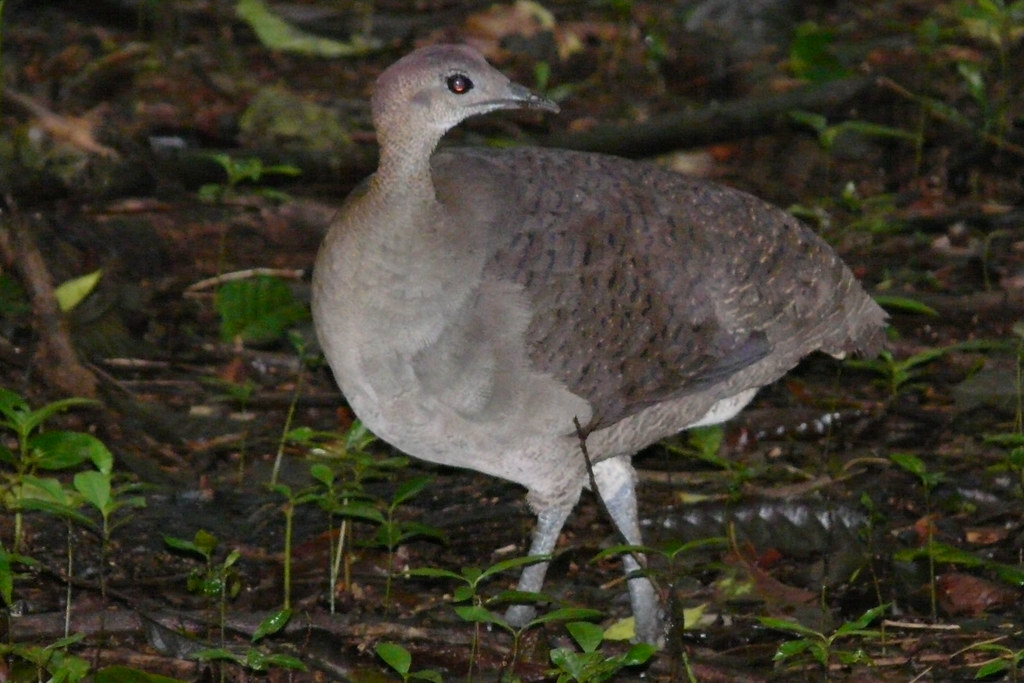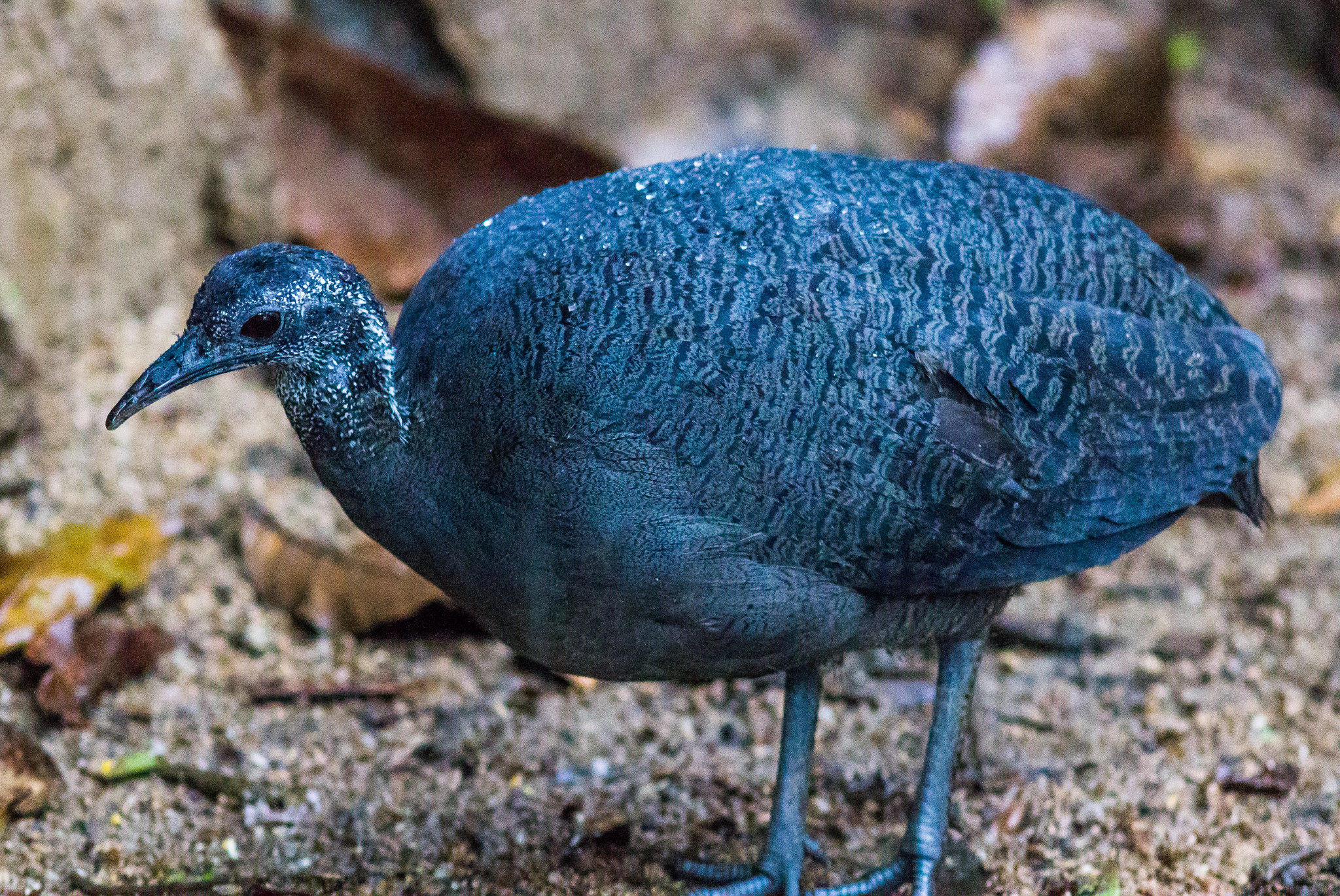Tawny-breasted Tinamou
Nothocercus julius Chocora de Tama
Identification: 15-16" (38-41cm). Bill blackish; legs dark gray. Forecrown chestnut, otherwise brown above evenly and densely barred black throughout; sides of head cinnamon rufous, chin and throat white (conspic.), neck dark gray faintly barred dusky and becoming bright cinnamon rufous on breast and belly; thighs and flanks olive brown barred black.
Sim. species: See duller Highland Tinamou which lacks barring above, is much duller below, and has buff (not white) throat. Also see larger Gray Tinamou.
Voice: In Ecuador a chantlike ser. of short, fluttery trills, t’r’r’r’a, t’r’r’r’a,..., fairly high in pitch, for up to 30 or more sec at ca. 3 per 2 sec; song fades at end, often with lower-pitched trill near end.
Behavior: As in Highland Tinamou.
Status and habitat: A poorly known sp. found mostly outside Venez. Wet montane forest (cloud forest). Occurs mainly above range of Highland Tinamou.
Range: 2400-2800m. S Tachira at headwaters of Rio Tachira (Paramo de Tama; Villa Paez) and upper Rio Chiquito at Cerro El Retiro. Colombia s in Andes to s Peru.
| Source: Avibirds |
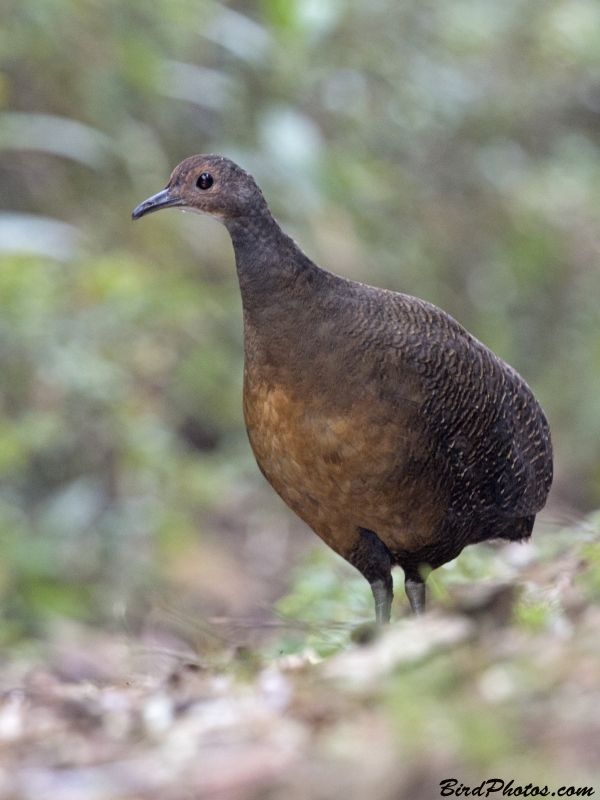 |
| Source: Tom Friedel |
